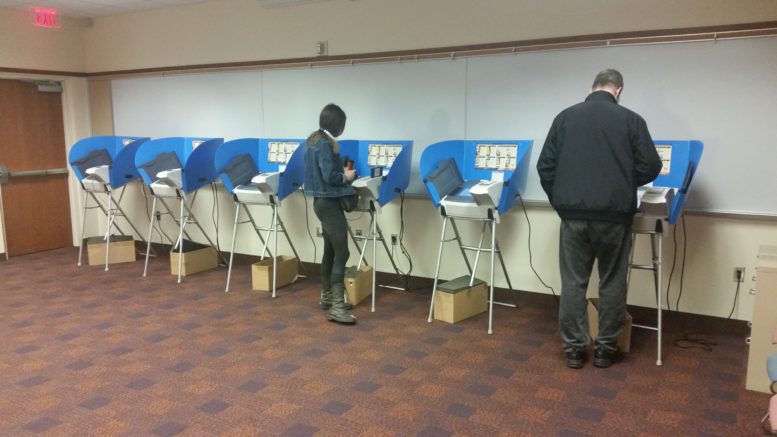By JAN LARSON McLAUGHLIN
BG Independent News
More than 3,400 registered voters in Wood County were purged from the voting rolls last year. But some are now being given a chance to vote this year.
Following a directive from the Ohio Secretary of State Jon Husted, 3,424 registered voters were dropped from Wood County’s voters list in August of 2015.
However, last month, a federal appeals court found that Ohio’s process for maintaining its voter rolls violates federal law. And on Wednesday, a judge ruled that Ohio voters who were improperly removed from registration lists can cast ballots in the presidential election.
“I confidently predicted this was unconstitutional. Their votes will count,” said Mike Zickar, a member of the Wood County Board of Elections.
The ruling means if a person shows up at the polls and believes they are registered to vote but they are not on the official list, they will be allowed to vote by a provisional ballot. A provisional ballot is a paper ballot that is held in a sealed envelope with the voter’s identification. If the identification information is verified by the elections board staff over the next 10 days, the provisional ballot is counted.
It’s unfortunate the ruling came so late, and that the people will have to vote by provisional ballots, Zickar said. “But to me, it’s just exciting that no one is disenfranchised.”
The provisional voting process for people not on the voter rolls has been an accepted practice in Ohio, according to Terry Burton, director of the Wood County Board of Elections. “That’s the hard and fast rule the state has created,” he said.
The local board of elections has yet to encounter anyone during early voting who believes they were registered but had been purged from the list.
“Typically, we find very few inactive voters tend to actually vote,” Burton said. “I will be shocked if it’s a meaningful number in the end.”
But Burton assured that ballots from purged voters will count.
“Obviously every vote counts,” he said. “If they were taken off during one of the purge processes and they are at their same address, their vote will be counted.”
Last year, the state’s directive ordered county boards of election to wipe voters from the rolls if they have shown “no voter initiated activity” since the last two federal elections. That “activity” includes voting, signing petitions or filing for a change of address.
Wood County Board of Elections Director Terry Burton explained the process requires the office to send out postcards to registered voters who have not voted in the last two federal elections. That postcard is basically asking the citizen, “Are you still there?” Burton said.
If the citizen getting the postcard does not respond, their status goes “inactive,” however, they can still vote, Burton said.
But if the person has four more years of no voting activity, they were kicked off the rolls.
“Those people get purged,” Burton said earlier this year.
Not everyone viewed the purge as legitimate.
“I see it as a clear violation of law,” Zickar said earlier this year, adding that national voter law forbids removing people from rolls due to their voting inactivity. “Very few states are throwing people off for not voting.”
A federal lawsuit asked the court to stop the purging process from going forward, and for other purged voters to be re-instated ahead of the November 2016 election. The suit alleges that because so much attention is on the presidential race this year, a much larger number of infrequent Ohio voters will be “denied the opportunity to cast a vote that counts.”
According to Zickar, studies show that a disproportionate number of minority voters are thrown off of rolls during purging efforts.
But Husted maintained that the purging was legal and that over the past five years his office has removed 465,000 deceased voters and 1.3 million duplicate registrations.
According to Burton, the federal rules are basically the same, but in Ohio, the purging process is done every year, not every other. He added that in recent years, under Husted’s leadership, Ohio boards of elections have gotten more serious about reviewing their rolls.
“For a long time, we weren’t doing purges. We were just adding,” Burton said.
Burton said the recent court ruling should not cause undue stress on the board of elections. “The final process is going to be somewhat time consuming,” he said, but the board will have up to 10 days to process the provisional votes. “The positive for us is this is a project that can be done after election day when we have time.”

